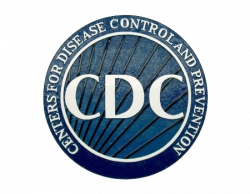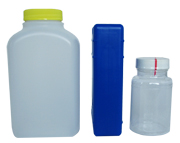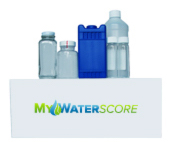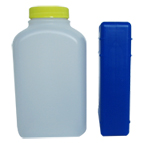Why Get Your Well Water Tested?
 The Center for Disease Control (CDC) recommends testing well water at least once a year. Even though the Environmental Protection Agency (EPA) tests public water systems, it doesn’t test wells. According to the CDC, “The U.S. Environmental Protection Agency’s (EPA) rules that protect public drinking water systems do not apply to individual water systems, such as privately owned wells. As an individual water system owner, it is up to you to make sure that your water is safe to drink.”
The Center for Disease Control (CDC) recommends testing well water at least once a year. Even though the Environmental Protection Agency (EPA) tests public water systems, it doesn’t test wells. According to the CDC, “The U.S. Environmental Protection Agency’s (EPA) rules that protect public drinking water systems do not apply to individual water systems, such as privately owned wells. As an individual water system owner, it is up to you to make sure that your water is safe to drink.”
Wells are especially vulnerable to naturally occurring chemicals and minerals, pesticides, and malfunctioning wastewater treatment systems like sewer overflows. That means your water could contain human and animal feces and other contaminates that can make you, your family, and your pets sick.
We Can Help!
We can help you set up an annual testing routine so that you’re not exposed to heavy metals like lead and arsenic, the viruses and germs that cause e-coli, giardia, and salmonella, and cancer causing agents like nitrates and radon. These contaminates can cause gastrointestinal illness, reproductive problems, and neurological disorders. Infants and children, pregnant women, the elderly, and people whose immune systems are compromised may be especially susceptible to illness from contaminated well water.
Other contaminates such as sodium, chloride, and sulphate may not make you sick, but they can make your water taste and smell foul. And while fluoride is an essential micronutrient, did you know that too much fluoride in the water can actually harm your teeth?
The good news is, it’s simple to test your well water! It is important to test your drinking water both at the tap and at the source. If your well is shallow, you should test even more often.
Other reasons to test your well water include:
- Known problems with well water in your area
- Flooding, land disturbances, and nearby waste disposal sites
- You replace or repair any part of your well system
- You notice a change in water quality (i.e., taste, color, odor)
Testing each year also helps you keep track of changes in your water over time and allows you to see if your treatment system is working effectively.
Our tests will identify contaminants in your water and help you select a proper course of treatment. Our well water tests come in three levels so they can be customized to fit your needs. Our tests are analyzed by independent, certified laboratories for accuracy and we will help you understand the significance of your results, so that you can act confidently for the safety of your family.
Basic
Simple Well Water TestProtect Your Family From:
- Coliform & Ecoli Bacteria
- pH, TDS & Hardness
- Nitrates / Nitrites
- Iron
- 52 VOC’s
- Lead
- Copper
- Sulfate
- Pesticides & Herbicides
- PCB’s
- Arsenic
- Chromium
- Plus 19 ADDITIONAL Inorganic Chemical Contaminants, Metals and Physical Factors

EPA Minimum
VOC and Lead TestProtect Your Family From:
- Coliform & Ecoli Bacteria
- pH, TDS & Hardness
- Nitrates / Nitrites
- Iron
- 52 VOC’s
- Lead
- Copper
- Sulfate
- Pesticides & Herbicides
- PCB’s
- Arsenic
- Chromium
- Plus 19 ADDITIONAL Inorganic Chemical Contaminants, Metals and Physical Factors

Complete Water Score
Best Value - Comprehensive Water TestProtect Your Family From:
- Coliform & Ecoli Bacteria
- pH, TDS & Hardness
- Nitrates / Nitrites
- Iron
- 52 VOC’s
- Lead
- Copper
- Sulfate
- Pesticides & Herbicides
- PCB’s
- Arsenic
- Chromium
- Plus 19 ADDITIONAL Inorganic Chemical Contaminants, Metals and Physical Factors

Why Get Your City Water Tested?
If you pay a water bill, your water comes from a public water system.
The Environmental Protection Agency (EPA) is responsible for testing public drinking water systems once each year, but that doesn’t necessarily mean the water that comes out of your tap is clean and safe. These standards were established in 1972 before the discovery of many modern carcinogens and the EPA only tests water in the main system. These tests do not apply after water leaves the main line and enters your house or apartment. Old pipes and other problems could lead to contamination in the water your family drinks. In addition, EPA tests do not cover all contaminants that can affect your health and the smell and taste of your water.
According to the Center for Disease Control:
“The presence of certain contaminants in our water can lead to health issues, including gastrointestinal illness, reproductive problems, and neurological disorders. Infants, young children, pregnant women, the elderly, and immunocompromised persons may be especially at risk for becoming ill after drinking contaminated water.”
Basic City Score
Basic Lead and ChlorineProtect Your Family From:
- Lead
- Free Chlorine
- Total Chlorine
- pH
- TDS
- Hardness
- Iron
- ORP

City Water Score
Lead and Chlorine Exposure PlusProtect Your Family From:
- Arsenic
- Lead
- Mercury
- Chlorine / Chloramine
- Chloroform
- Fluoride
- Uranium
- Chromium
- Strontium
- Nitrates / Nitrites
- Sulfates
- Plus 77 ADDITIONAL Metals, VOC’s, Inorganic Compounds and Physical Factors!

Our tests will identify the following contaminants in your drinking water:
- Fluoride – Though small amounts of fluoride can help prevent cavities, too much fluoride can be harmful to your health.
- Lead – Lead is often found in older building with corroded pipes. It is a heavy metal that can cause developmental issues in children, lead to premature birth and cause abdominal pain and other symptoms in adults.
- Chlorine – While some amount of chlorine helps to purify water, drinking too much chlorine can cause stomach issues.
- PCBs – These chemicals were originally used to make paints, insulation, adhesives and other products and have been found in water all around the United States.
- DDT – This insecticide was banned in 1972, but it is still made in the United States and sold to foreign countries. DDT can affect the nervous system, cause liver damage and may cause reproductive problems.
There are many reasons to test your tap water, even if it comes from a public drinking water system. For example, if you live in an older house or building, it’s vitally important to test for lead. If you notice any changes to the color, flavor, or smell of your tap water or stains on your clothes or plumbing fixtures, it could indicate a problem with your water. If you’re considering a home water filtration or treatment system, it’s a good idea to test your water first.
Our test will identify contaminants in your tap water and help you select a proper course of treatment. Our tests are analyzed by independent, certified laboratories for accuracy, and we will help you understand your results so that you can act with confidence in the defense of your family’s well being!

